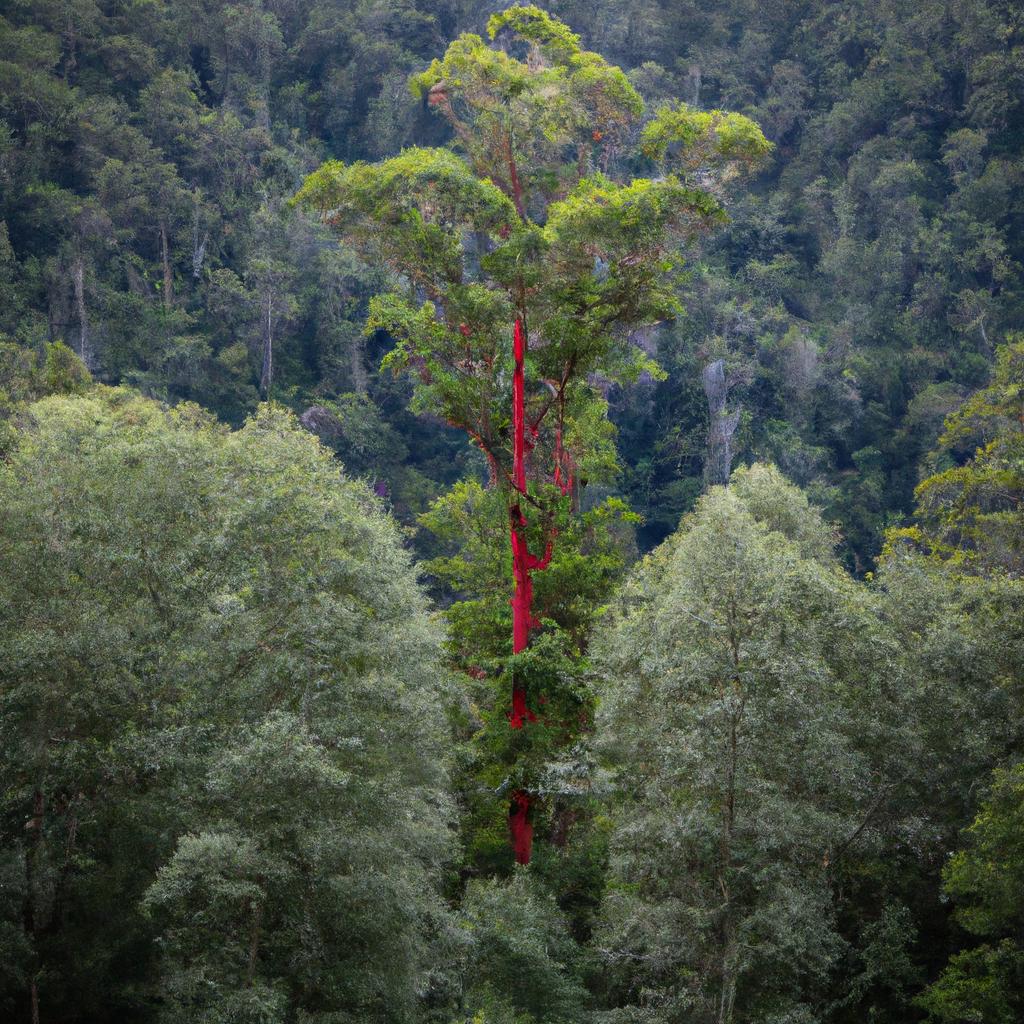The red tingle tree, scientifically known as Eucalyptus jacksonii, is a remarkable species of eucalyptus tree found along the southwest coast of Western Australia. Towering up to 75 meters in height and boasting a diameter of 24 meters, this majestic tree is one of the largest eucalyptus species in the world. Not only is it an awe-inspiring sight to behold, but it also holds immense ecological significance in the region.
A Unique Species in a Biodiverse Wonderland
The red tingle tree primarily thrives in the Walpole-Nornalup National Park, a haven nestled in the southwest corner of Western Australia. This picturesque region experiences a Mediterranean climate, characterized by cool, wet winters and hot, dry summers. The red tingle tree flourishes in nutrient-rich soils that are often waterlogged and poorly drained.
While the red tingle tree has been introduced to other parts of the world, such as South Africa, New Zealand, and the United States, it truly finds its home in the southwest corner of Western Australia.
Building Homes and Nurturing Life
This magnificent tree serves as a vital component of the region’s biodiversity, providing a habitat for numerous animal species. The hollows formed within its sturdy trunk act as nesting sites for various bird species, including the endangered cockatoo. Additionally, the tree’s bark serves as a vital food source for the western ringtail possum, an endangered species inhabiting the region. The red tingle tree’s ecological value cannot be understated.
Discovering the Wonders of the Red Tingle Tree
Physical Characteristics of a Natural Giant
The red tingle tree’s colossal size is just the tip of the iceberg when it comes to its unique physical traits. Its massive buttresses, which provide stability in poor soil conditions, set it apart from other eucalyptus species. The bark of the tree, thick, fibrous, and reddish-brown, offers protection against fire and insects. Its texture, coupled with its resilience, attracts tourists from far and wide.
The leaves of the red tingle tree are distinguished by their long and narrow structure, reaching up to 20 centimeters in length. Glossy green on the upper surface and paler underneath, they have evolved to withstand the region’s harsh climate. The tree’s white or cream-colored flowers bloom from December to February, drawing bees, birds, and insects. Its woody, cone-shaped fruit, around 2.5 centimeters in diameter, serves as an essential food source for various bird species, including the endangered Carnaby’s black-cockatoo.
An Ecological Role of Vast Proportions
Beyond its sheer beauty, the red tingle tree provides invaluable ecosystem services. Its large leaves intercept and absorb rainfall, regulating the area’s water cycle. Furthermore, the extensive root system prevents soil erosion, anchoring the earth in place. Countless animal species find shelter within the tree’s majestic hollows, including birds, mammals, insects, and reptiles. Its role as a habitat for the endangered Carnaby’s black-cockatoo and the vulnerable western ringtail possum highlights its conservation significance.
Cherished Cultural Roots and Natural Tourism
The red tingle tree holds profound cultural significance for the Noongar people, the indigenous inhabitants of Western Australia. They consider the tree sacred and utilize it in traditional medicine to treat various ailments. Additionally, the tree’s bark is skillfully woven into baskets, while its wood is employed for firewood and tool-making.
In modern times, the red tingle tree has become an integral part of Western Australia’s tourism industry. The Walpole-Nornalup National Park, home to a substantial red tingle population, attracts countless visitors annually. From breathtaking scenic drives to invigorating bushwalks and the unforgettable experience of wandering along the giant treetop walk, tourists flock to witness the splendor of the red tingle tree and its captivating environment.
Upholding a Natural Wonder: Challenges and Conservation Efforts
Though the red tingle tree is an ecological and cultural treasure, it faces numerous threats that endanger its survival. Human activities such as logging, land clearance, and development pose significant risks to its habitat. Its dependence on nutrient-rich soils and adequate water supply leaves it particularly vulnerable to these activities. Furthermore, climate change, with its rising temperatures and declining rainfall, exacerbates these challenges.
To safeguard this remarkable species, extensive conservation efforts are underway. The Walpole-Nornalup National Park, the primary refuge of the red tingle tree, has been designated as a UNESCO World Heritage site, recognizing its exceptional natural and cultural values. The park’s management plan includes strategies encompassing wildfire management, invasive species control, and responsible visitor management.
In conclusion, the red tingle tree stands as an exceptional and ecologically vital species in the southwest region of Western Australia. Its cultural significance, ecological contributions, and enchanting beauty make it imperative to protect. Through the dedicated conservation efforts outlined in the Walpole-Nornalup National Park’s management plan, we strive to ensure the survival of this iconic species for generations to come.
To learn more about the fascinating world of the red tingle tree and explore the wonders of nature, visit TooLacks.



